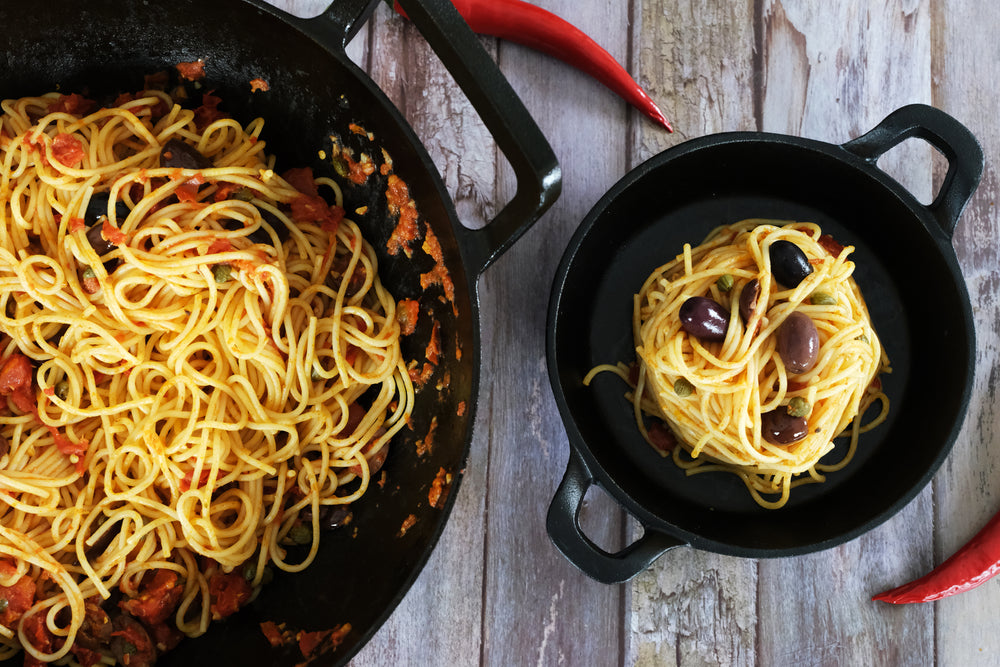Biryani: A Culinary Journey Through Flavor and Tradition

Biryani, a dish that transcends borders and brings people together through its aromatic blend of spices and tender, flavorful rice. This iconic dish has a rich history and a diverse cultural significance that has made it a favorite across the globe. In this blog post, we'll explore the origins of biryani, its health benefits, the art of cooking this delectable dish, and the essential seasonings and cookware to elevate your biryani experience.
Origins of Biryani
The roots of biryani can be traced back to the Indian subcontinent, with the dish evolving over centuries through various culinary influences. Some historians believe that biryani originated in the Indian subcontinent during the Mughal Empire, while others attribute its beginnings to the Persian dish pilaf. Regardless of its precise origin, biryani has become a culinary phenomenon with regional variations that reflect the diverse cultures and tastes of the subcontinent.

Health Benefits of Biryani
Contrary to the misconception that biryani is an indulgent and unhealthy dish, it can actually be a well-balanced meal when prepared thoughtfully. The use of aromatic spices like turmeric, cumin, and coriander not only imparts a rich flavor but also contributes to the dish's potential health benefits. These spices are known for their anti-inflammatory and antioxidant properties, making biryani not just a treat for the taste buds but also a nutritious option when enjoyed in moderation.

How Biryani is Cooked
The art of cooking biryani lies in the meticulous layering of ingredients and the slow-cooking process that allows the flavors to meld together. The two primary methods of preparing biryani are the "Pakki" method, where the meat and rice are partially cooked before layering, and the "Kacchi" method, where raw meat and parboiled rice are layered together. The choice of method often depends on regional preferences and family traditions, both of which contribute to the unique character of each biryani variation.
Seasoning
At the heart of biryani's irresistible taste is the harmonious blend of spices that season the dish. Common spices include cinnamon, cardamom, cloves, bay leaves, coriander, cumin seeds, black peppercorns, fennel, cloves and star anises, which infuse the rice and meat with their distinctive flavors. Additionally, saffron-soaked milk is often used to add a vibrant color and a subtle fragrance to the dish. Fresh herbs like mint and cilantro provide a burst of freshness, enhancing the overall appeal of biryani.

Cookware to Use
Choosing the right cookware is crucial for achieving the perfect biryani. Traditionally, a heavy-bottomed, wide-mouthed pot known as a "handi" is used for cooking biryani. The wide base allows for even distribution of heat, and the tight-fitting lid helps to trap the steam, ensuring that the rice cooks to perfection. Alternatively, a heavy-bottomed pan, Balti dish or a Dutch oven can also be used to replicate the slow-cooking technique essential for biryani.

Conclusion
Biryani, with its rich history, diverse variations, and exquisite flavors, has rightfully earned its place as a beloved dish around the world. Whether enjoyed at festive occasions or as a comforting family meal, biryani continues to be a culinary masterpiece that transcends borders and brings people together. So, the next time you embark on the journey of preparing biryani, savor not just the taste but also the cultural tapestry and culinary artistry that this iconic dish embodies.
Related topics:
















Leave a comment